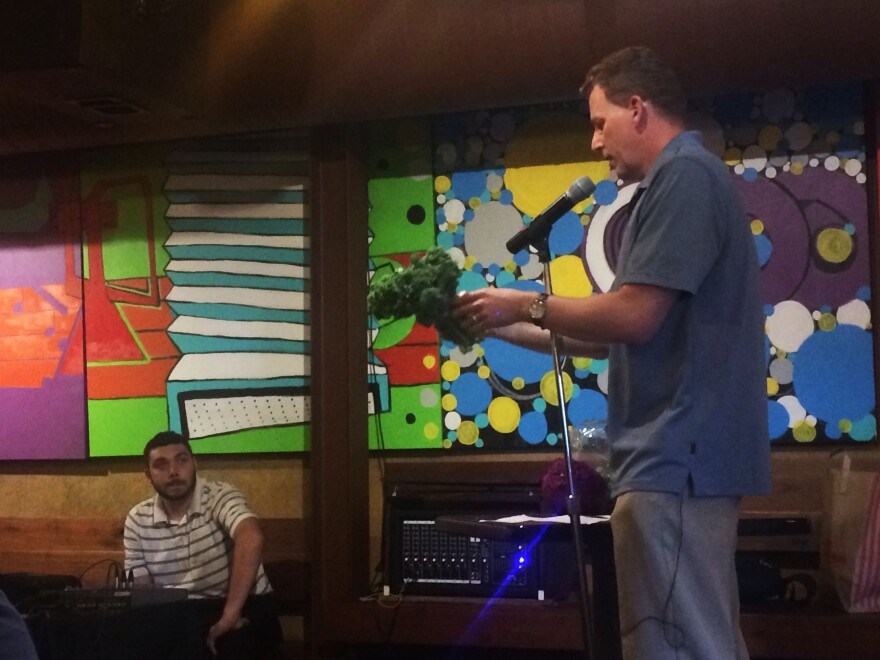Each month at the Columbia Science Cafe, a researcher from the University of Missouri gives a presentation at Broadway Brewery as people enjoy a beer or a bite to eat.
While the world of research labs seems far removed from the dinner table, one associate professor at MU is bringing the two together.
Dr. Chris Pires is a botanist at MU. But when he describes his research, he often sounds more like a genealogist.
“You can make a family tree for yourself, you can shake hands with your mom and your grandma and so forth. You can do the same thing with plants,” Pires said.
Over the past few years, Pires has been studying plants in one particular family, the genus Brassica.
“I often like to talk about Brassica as the dogs of the plant world,” Pires said. “Everybody knows that the Chihuahua and the Great Dane are a dog but not everybody knows that a cabbage, broccoli, cauliflower, kale, brussel sprout, kohlrabi are one species because they look so different.”
They may have different appearances, but all of the plants in the Brassica family have a sharp, bitter taste. Which is what produces some of our favorite spicy condiments, like mustard, wasabi and horseradish.
And Pires wanted to know what caused plants in the Brassica family to develop these distinct flavors.
What he found was that it all came down to the evolution of the cabbage butterfly. Or more specifically, the caterpillar from which these butterflies grow.
“We discovered that evolution of these chemicals, the glucosinolates, occurred over a 90 million year period,” Pires said. “Basically the plants built a very primitive mustard oil “bomb” which fought off the insects for a while.”
But eventually the caterpillars overcame these defenses and were to be able to digest the glucosinolates. So Team Brassica did what any species or country would do when feeling threatened: they built a bigger weapon.
“We were able to see by mapping on the different kinds of chemicals on the evolutionary tree that the compounds got more and more complex,” Pires said.
Researchers found that the Brassica plants and the cabbage butterflies developed back and forth in what’s called co-evolution. Pires and his colleagues refer to it as ‘an evolutionary arms race’ with the caterpillars and the plants continuously fighting to gain the upper hand.
And while most people don’t recognize glucosinolates in the mustard on their hotdog or the wasabi on their sushi, Pires said it’s important for people to understand the history of the food they eat.
“I guess as people have moved away from creating their own food to buying it in the store, they don't even know what the plant looks like, where the things came from,” Pires said.
“Understanding how plants became the way they are by human selection or by selection from the insects, I think we get to know more about our health and enjoy our food better if we know something about it.”




